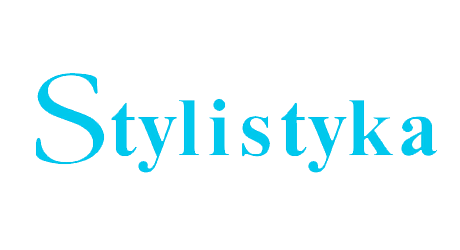Źródła
Google Scholar
NKJP: Narodowy Korpus Języka Polskiego; http://www.nkjp.uni.lodz.pl/ (dostęp: 06.05.2022).
Google Scholar
SD: Doroszewski W., 1958‒1969, Słownik języka polskiego, Warszawa; http://doroszewski. pwn.pl/ (dostęp: 05.05.2022).
Google Scholar
SEJP: Brückner A., 1927, Słownik etymologiczny języka polskiego, Kraków; https://polona.pl/item/slownik-etymologiczny-jezykapolskiego,MTE2NjUxOA/9/#info-:metadata (dostęp: 05.05.2022).
Google Scholar
SJP PWN: Słownik języka polskiego PWN, https://sjp.pwn.pl/ (dostęp: 05.05.2022).
Google Scholar
SL: Linde S. B., 1807–1814, Słownik języka polskiego, Warszawa; http://kpbc.umk.pl/publication/8173 (dostęp: 06.05.2022).
Google Scholar
SWar.: Karłowicz J., Kryński A., Niedźwiecki W., 1900‒1927, Słownik języka polskiego, Warszawa [słownik warszawski]; https://crispa.uw.edu.pl/objects/collection/76 (dostęp: 06.05.2022).
Google Scholar
SWil.: Zdanowicz A. i in., 1861, Słownik języka polskiego, Wilno [słownik wileński]; https://eswil.ijp.pan.pl/ (dostęp: 06.05.2022).
Google Scholar
WSJP: Żmigrodzki P. (red.), 2007, Wielki słownik języka polskiego, Kraków; https:// www.wsjp.pl (dostęp: 06.05.2022).
Google Scholar
Literatura
Google Scholar
Bartmiński J., 1990, Punkt widzenia, perspektywa interpretacyjna, językowy obraz świata. – Językowy obraz świata, red. J. Bartmiński, Lublin: Wydawnictwo Uniwersytetu Marii Curie-Skłodowskiej, s. 109‒127.
Google Scholar
Filar D., 2010, Synonimia leksykalna w leksykologii i leksykografii polskiej, „Roczniki Humanistyczne”, t. LVIII, z. 6, s. 41−57, https://ojs.tnkul.pl/index.php/rh/article/download/5631/5452/ (dostęp: 02.05.2022).
Google Scholar
Giza-Poleszczuk A., Poleszczuk J., 1992, Cyganie i Polacy w Mławie. Konflikt etniczny czy społeczny? Raport na zlecenie CBOS, Warszawa: Wydawnictwo Naukowe Scholar.
Google Scholar
Gontarczyk P., 2004, Pogrom? Zajścia polsko-żydowskie w Przytyku 9 marca 1936 roku, Warszawa: Rekonkwista-Rachocki i S-ka.
Google Scholar
Grochmalski P., 1999, Czeczenia. Rys prawdziwy, Wrocław: Atla2.
Google Scholar
Gross J. T., 2000, Sąsiedzi, Sejny: Pogranicze.
Google Scholar
Kon. ONZ: Konwencja ONZ w sprawie Zapobiegania i Karania Zbrodni Ludobójstwa, 1948, http://libr.sejm.gov.pl/tek01/txt/onz/1948a.html (dostęp. 07.05.2022).
Google Scholar
Markowski A., 2018, Przemoc antyżydowska i wyobrażenia społeczne. Pogrom białostocki 1906 roku, Warszawa: Wydawnictwa Uniwersytetu Warszawskiego.
DOI: https://doi.org/10.31338/uw.9788323535546
Google Scholar
Maroń A., 2020, Wokół pojęcia pogromu w refleksji nad przemocą antyromską, „Prace Kulturoznawcze”, t. 24, nr 2, s. 111‒126, https://wuwr.pl/pkult/article/ download/12045/10934/ (dostęp: 06.05.2022).
DOI: https://doi.org/10.19195/0860-6668.24.2.8
Google Scholar
Nagórko A., Łaziński M., Burkhardt H., 2004, Dystynktywny słownik synonimów, Kraków: Universitas.
Google Scholar
Nijakowski L. M., 2013, Rozkosz zemsty. Socjologia historyczna mobilizacji ludobójczej, Warszawa: Wydawnictwo Naukowe Scholar.
Google Scholar
Pracoń A., 2001, Masakra na wyspie Utoya. Relacja człowieka, który przeżył zamach, przeł. K. Tunkiel, Warszawa: Wydawnictwo Pascal.
Google Scholar
RzSMTK 1998: Statut Międzynarodowego Trybunału Karnego, sporządzony w Rzymie dnia 17 lipca 1998 r., https://isap.sejm.gov.pl/isap.nsf/download.xsp/WDU20030780708/O/D20030708.pdf (dostęp: 02.05.2022).
Google Scholar
Szmurło Z. T., 2013, Pierestrojka i tragiczne wydarzenia w Sumgaicie, „Studia Gdańskie. Wizje i Rzeczywistość”, t. 10, s. 267‒284.
Google Scholar
Traczyk M., 2015, Miasta śmierci. Sąsiedzkie pogromy Żydów, Warszawa: Wydawnictwo RM.
Google Scholar
Wierzbicka A., 1991, Uniwersalne pojęcia ludzkie i ich konfiguracje w różnych kulturach, „Etnolingwistyka”, t. 4, s. 7–40.
Google Scholar
Żebrowski R., Pogrom. – Polski słownik judaistyczny, http://www.jhi.pl/psj/pogrom (dostęp: 05.05.2022).
Google Scholar


 https://doi.org/10.25167/Stylistyka31.2022.4
https://doi.org/10.25167/Stylistyka31.2022.4
